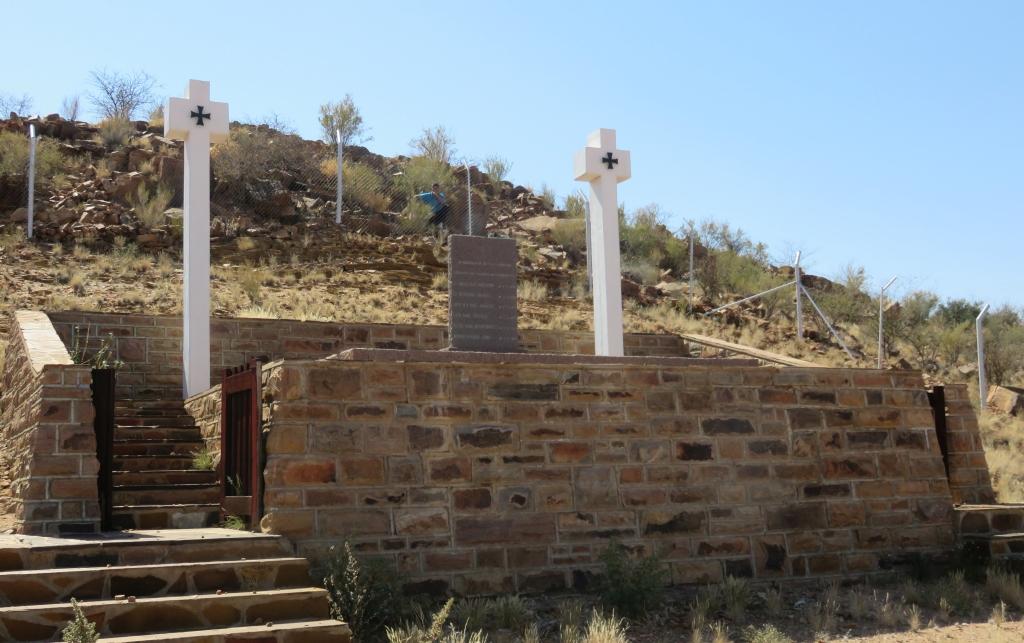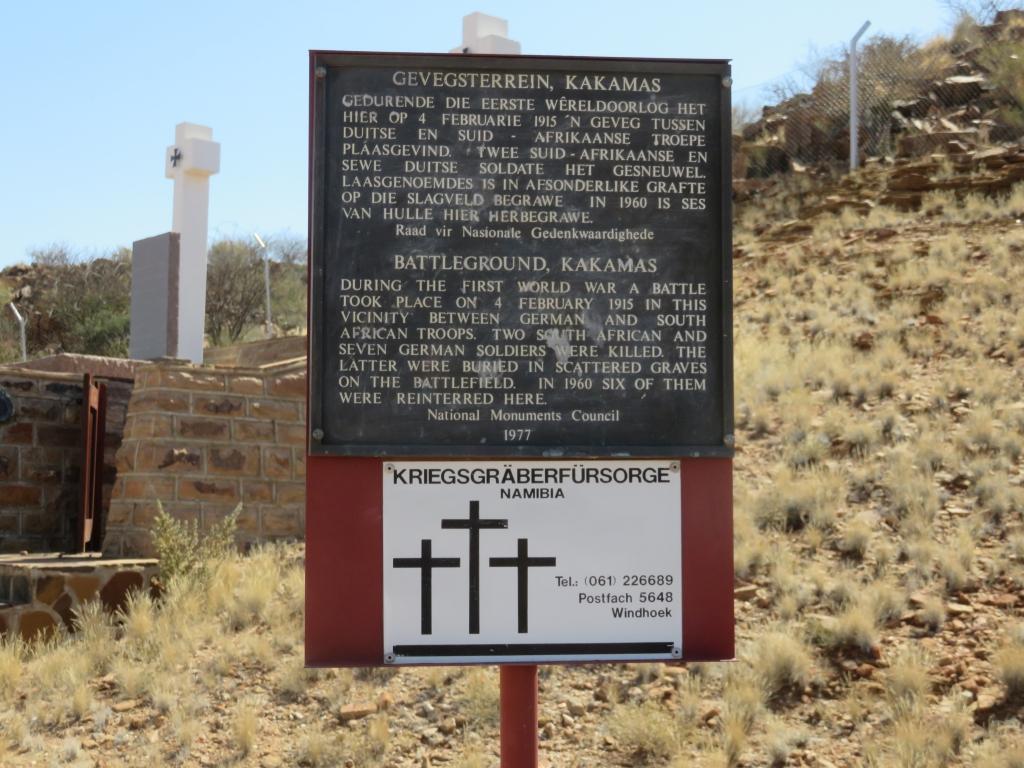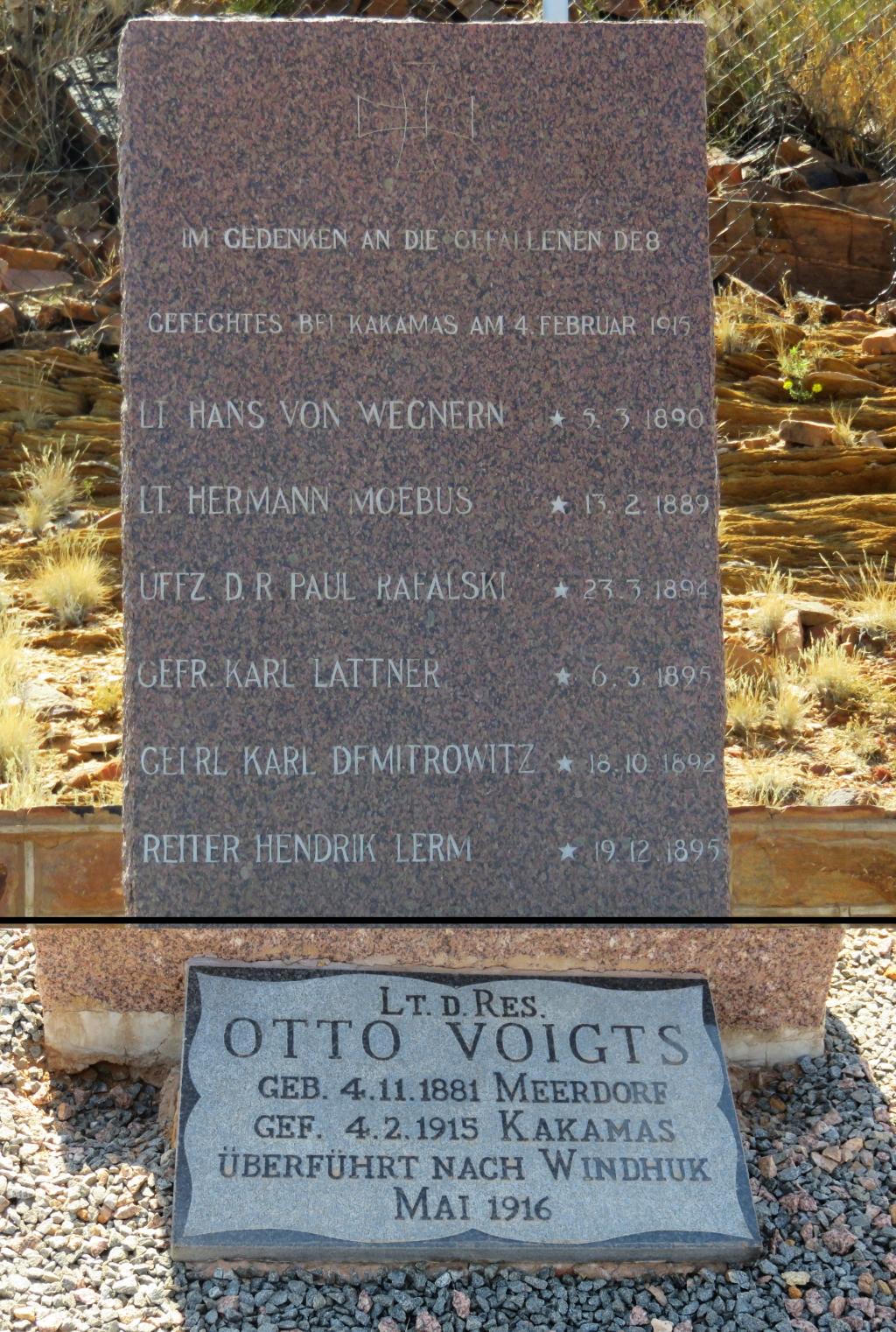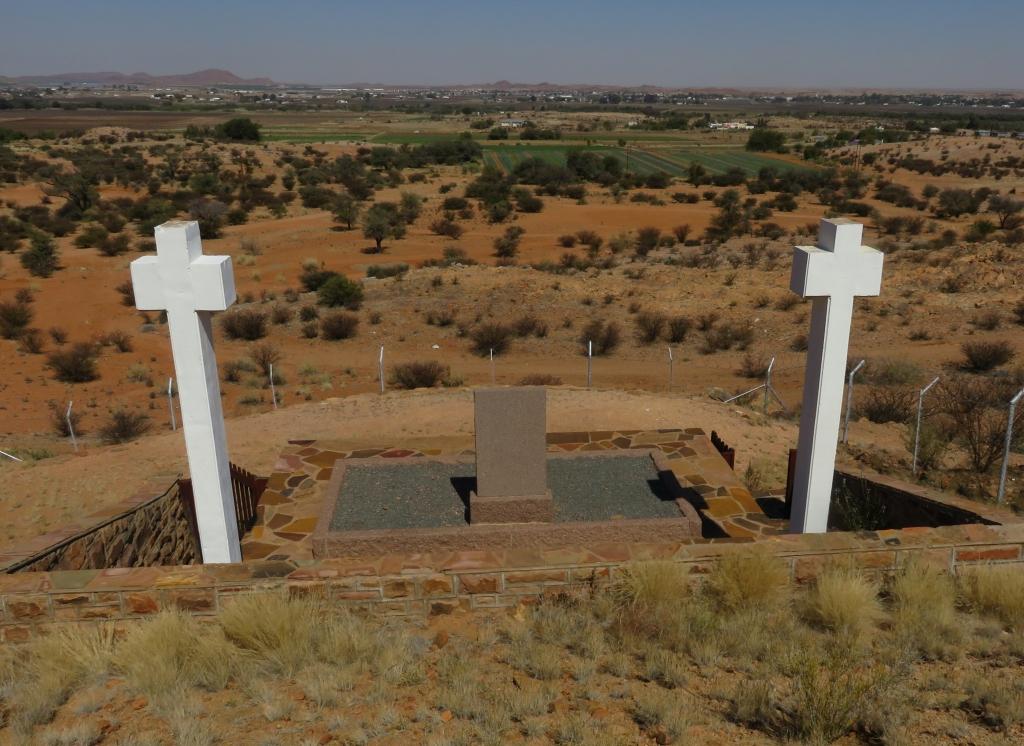
Disclaimer: Any views expressed by individuals and organisations are their own and do not in any way represent the views of The Heritage Portal. If you find any mistakes or historical inaccuracies, please contact the editor.
When I picked up a tourist brochure in the Northern Cape and read something about German war graves at Kakamas, my interest was piqued. The existence of German war graves implies that there must have been German troops in South Africa. I do possess a fair knowledge of German and South African history and just couldn't think what the historical event was. What were some of my countrymen doing in South Africa fighting a war and why?
The site is at the north side of the Orange River across from Kakamas, near a small town called Lutzburg, about 85 km west of Upington along the N14. The coordinates are: 28.7436ºS, 20.6363ºE and altitude 682m.
Information board (Horst Müller)
Some internet research and a visit to the gravesite revealed what had happened here.
At the beginning of the First World War, when the Union of South Africa was drawn into the war against Germany through being part of the British Empire, it was expected of the South African forces to move into German South West Africa. Whilst the South African army was mobilising, some of the Schutztruppe (territorial troops) did not wait and attack being the best form of defence moved towards the Orange river in order to block the crossing point at Kakamas.
A battle ensued on the 4 February 1915 between the South African army under the command of Colonel J van Deventer and the Schutztruppe under Major Ritter. The result was that the Germans got pushed back with the loss of seven soldiers, the South Africans lost two.
The fallen soldiers were initially buried on the battlefield where they had fallen and in 1960 collected to be re-buried in one place which is the place described here.
The memorial stone (Horst Müller)
The memorial stone reads as follows:
Im Gedenken an die Gefallenen des (in memory of the fallen soldiers of the)
Gefechtes bei Kakamas am 4.Februar 1915`(battle at Kakamas 4.Feb.1915)
Lt Hans von Wegnern *5.3.1890
Lt Hermann Moebus *13.2.1889
Uffc D.R.Paul Rafalski *23.3.1894
Gefr. Karl Lattner *6.3.1895
Gei RL Karl Dfmitrowitz *18.10.1892
Reiter Hendrik Lerm *19.12.1895
The separate stone slab below reads:
Lt. d. Res.
Otto Voigts
Geb. 4.1.1881
Gef. 4.2.1915 Kakamas
Überführt nach Windhuk
Mai 1916
It states that the remains of Otto Voigts, were moved to Windhoek in May 1916.
The titles give me a bit of a headache, not being familiar with military ranks. Lt is Leutnant, in English lieutenant. Uffc is Unteroffizier, in the British army this would be a NCO (non commissioned officer). Gefr is Gefreiter, in English Sergeant. Gei RT has me baffled, no idea. Reiter is a rider, I presume in the cavalry. Lt.d.Res., Leutnant der Reserve, in English lieutenant of the reserve.
View over to the battlefield (Horst Müller)
The South Africans are buried at the NG cemetery in Kakamas. The memorial is in a good condition, looked after by the Kriegsgräberfürsorge Namibia (war graves council for Namibia). It is surrounded by a big fence, which is a pity, but I can also understand the reason. Somebody before us cut the fence so it was possible to take a closer look.
About the author: Horst originated from Germany many years ago. He has spent a lifetime working for some of the major chemical companies. Throughout his life he has had an interest in local history and has now, in retirement, made this his major hobby. He believes in not just doing the exploration and research but to also write down his findings. Check out his website here. Horst is a regular contributor to The Heritage Portal. Check out his other articles here.
Comments will load below. If for any reason none appear click here for some troubleshooting tips. If you would like to post a comment and need instructions click here.



